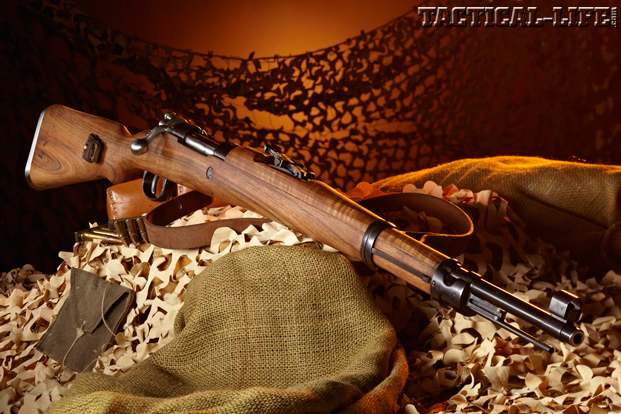
But in the record book it was recorded as 11009.
#Mauser serial number guide serial number#
In this example the serial number is ٦١٠٠٩/61009. Now that we have the guide in place, lets take a look at some examples that we discovered at Springfield Armory. A trick that I use to remember the difference is that with the “8”, an English “8” can have the bottom circle “fit” inside the lower portion of the upside Arabic “V” / “8”, but an English “7” can fit the top line into the Arabic “V”, and complete a sort of triangle.

Which makes students confuse the two often. One other point that even students of the languages often confuse is the “7” and “8” numerals because they simply mirror opposites of each other. Which leads me to another point wherein both systems the “0” numeral is just a dot, sometimes confused with a period in a sentence- ٠ The key note to remember here is “Is it a Dot or is it a Circle?”. In engravings or stampings, both just look like an English “0”. These are essentially negligible, one looking more like a circle and the other an upside heart. You’ll notice that the “5”s in both systems have some differences as well- ٥ ۵ It can sometimes be confused with an unclosed Arabic “9” which is the same in English. Whereas the Farsi “6” is similar but has an almost closed circle, looking like an English “9”. Then the Arabic “6” is the same slash but with a straight line to the left, looking like an English “7” and displayed as- ٦ Whereas a Farsi “4” is really a continuation of the previous slash with a swirl on the right side of the digit that we see with “2” and “3”, displayed as- ۴ An Arabic “4” looks like a backwards “3” or “E” in English and is displayed as- ٤ Identical apart from two digits, let’s look at them compared below- EnglishĪs you can tell, the numerals are identical except for the “4” and “6” digits. These are the Arabic and Farsi number systems. To begin with, there are two variations of the number system in Arabic script-based languages. It really isn’t that difficult and you don’t have to take a summer course in Arabic or Farsi either! Pictured below is the original rifle in question and the record data entry for it, unaltered.īut apart from just pointing these errors out, I’ll write up a small guide for collectors, curators, or researchers interested in taking these numbers down.
#Mauser serial number guide serial numbers#
As a testament to doing things right, the current curator realized the issue and we got the correct serial numbers recorded in thier database. Comical at face value indeed, but this could easily lead to some serious cataloging and inventorying issues if something as important as the serial number is recorded incorrectly. But in the record book, it is officially listed as “TEETIP”! What appears to have happened is that the Springfield Armory recorder looked at the digits, either didn’t realize that these were numbers or didn’t want to bother to look them up, and simply wrote down what the digits most resembled in the English alphabet. The serial number is a very straightforward numerical marking, consisting of the Arabic numbers “344219”.

Such as the featured image above, which has the record entry superimposed over the receiver of a Peabody-Martini that was made on contract for the Ottoman Empire in the 1870s. Most of them were basic mistakes when interpreting the numerals, but some were downright humorous. When we looked up the old records concerning the Turkish, Egyptian, and Iranian rifles we found out that the recorders hadn’t done their due diligence when it came to accurately recording the serial numbers of the rifles in question.


While completing some research at Springfield Armory National Historic Site in Massachusets, myself and the curators discovered an interesting phenomena when it came to previous curators at Springfield Armory recording their rifles coming into inventory.


 0 kommentar(er)
0 kommentar(er)
